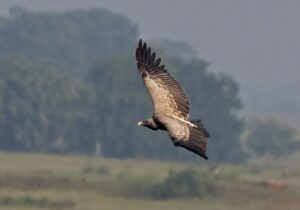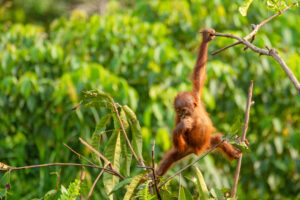A passion for the natural world drives many of our adventures. And when we’re not outside, we love delving into the discoveries about the places we live and travel. Here are some of the best natural history links we’ve found this week.
The spiders that choose death: For several spiders, sex is the beginning of the end. With orb-weaving spiders, widow spiders, and wolf spiders, the females eat the males alive after mating.
Though most males try to escape, some male widow spiders initiate their own deaths. They flip back onto the female’s mouth, almost forcing her to bite. Those who have observed the bizarre ritual have noted that when males did not flip backward, the females did not try to eat them.
Nutritionally, the female spiders gain very little from eating the males. The average male spider’s weight is just two percent of the average female.
“She would do better with a fly…they [the males] are forcing the females to kill them,” said biologist Lanka Sentenska. One theory for self-sacrifice is better reproductive chances. Studies found that males that were eaten transferred more sperm and were able to fertilize more eggs.

Three released female bison in Kent. Photo: Alexander Turner/The Guardian
Rewilding the UK
Wild bison return to the UK: On July 18, three wild bison stepped into the Kent countryside, in the south of England. They are the first wild bison in the UK for thousands of years.
The large animals have been released as “ecosystem engineers”. All three bison come from wildlife parks. The oldest female, the matriarch of the trio, is from the Scottish Highlands. The two younger females are from Cork in Ireland. Ecologists hope that the bison will help transform a dense pine forest into natural woodland.
One of their main food sources is bark, so their feeding will kill some of the trees. Their large size will also open trails through the forest, and their love of dust baths will create more open space on the forest floor.
The changes they bring about should allow new wildlife to thrive. “We need to revolutionize the way we restore natural landscapes, relying less on human intervention and more on natural engineers like bison, boar, and beaver,” Evan Bowen-Jones from the Kent Wildlife Trust explained.
At the bottom of the Red Sea
Death pools under the ocean: Deep-sea brine pools in the Red Sea are one of the most extreme environments on earth.
There are only a few dozen of these hypersaline pools worldwide, and the majority are in the Red Sea. The anoxic pools are home to extremophiles. These are microbes that can endure such alien conditions and may offer insights into how life on earth began, or how life may survive on other planets.
The pools can also be deadly. “The brine is devoid of oxygen, any animal that strays into it is immediately stunned or killed,” said marine geoscientist Sam Purkis.
A great number of fish shrimp and eels live around the pools, possibly to scavenge anything that falls victim to that environment.

Brine pools in the Red Sea. Photo: OceanX
India to reintroduce cheetahs
Cheetahs to return to India: For the first time in 70 years, cheetahs will prowl India’s grasslands. Conservationists are releasing eight of the large cats in Kuno-Palpur National Park in Madhya Pradesh, which has a suitable habitat.
India declared the cheetah extinct in 1952. The eight new cheetahs will come from Namibia.
“The main goal of the cheetah reintroduction project is to establish a viable cheetah population in India that allows the cheetah to perform its functional role as a top predator,” India’s environment ministry said.

Cheetahs from Namibia are to be released in India. Photo: Shutterstock
Mammals’ ears hold the secret to warm-bloodedness: When did mammals and birds become warm-blooded and able to generate their own body heat? Researchers now think our ears might hold the secret.
Body temperature affects the shape of the inner ear. The semicircular canal system is a series of tubes that are filled with liquid. This helps with balance and movement. As the liquid warms, it becomes runnier, so the shape of the canals in warm-blooded animals needs to be a different shape to do its job reliably.
“If you need to run [from a predator] and your inner ear system doesn’t know where your head is, then you’re going to die,” paleontologist Ricardo Araujo explains.
Researchers have been studying the inner ears of a number of modern and fossilized species. They identified a shape consistent with warm-bloodedness in a 233 million-year-old fossil. This suggests warm-blooded organisms existed in the Late Triassic before mammals walked the earth.
Are penguins in trouble?
Penguins might not be able to adapt to climate change: Penguins have evolved to survive in extreme environments. Yet 75% of penguin species are now extinct, so there is a limit to how well they can adapt.
Researchers have located the genes that allow penguins to swim and survive in the cold. Some genes allowed shorter, denser flippers for diving, others led to the development of highly insulating white fat.
Despite their ability to handle a difficult climate, they have the slowest known rate of evolution among birds. “The slow evolutionary rates among penguins, and the speed at which Earth’s climate is currently changing, does not bode well for penguins,” said seabird ecologist Barbara Wienecke.






